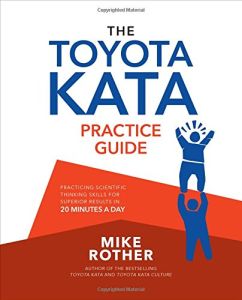Join getAbstract to access the summary!

Join getAbstract to access the summary!
Mike Rother
The Toyota Kata Practice Guide
Practicing Scientific Thinking Skills for Superior Results in 20 Minutes a Day
McGraw-Hill, 2017
What's inside?
Kata learners and coaches will welcome this precise, thorough guide.
Recommendation
If you have ever trained in martial arts, you may be familiar with kata, the Japanese term for a routine or pattern that improves your practice. Based on this approach, Toyota created a routine that supports continual improvement. This heavily illustrated guide to Toyota Kata offers a thorough, detailed explanation of how to learn and coach “Starter Kata” and “Improvement Kata.” The graphics on nearly every page, combined with examples from sports, music and business, make the technique easy to follow. This guide complements Mike Rother’s 2017 book, Toyota Kata Culture, and you’ll need both books to implement Kata. The details make the difference in putting the process into action versus simply understanding it. Whereas the earlier, much shorter book might suffice for senior executives, getAbstract finds that every Kata learner and coach in your organization could work from this practical guide.
Summary
About the Author
Mike Rother, an engineer, researcher, teacher and Kata expert, helps individuals, teams and organizations develop scientific thinking.




















Comment on this summary